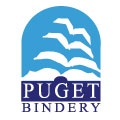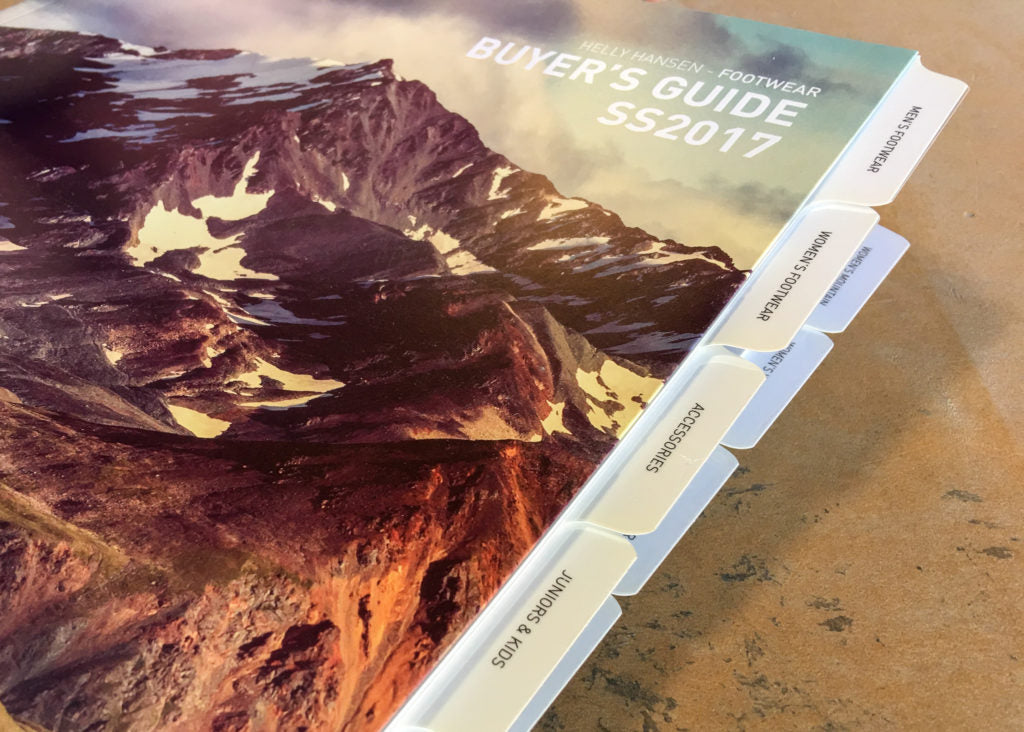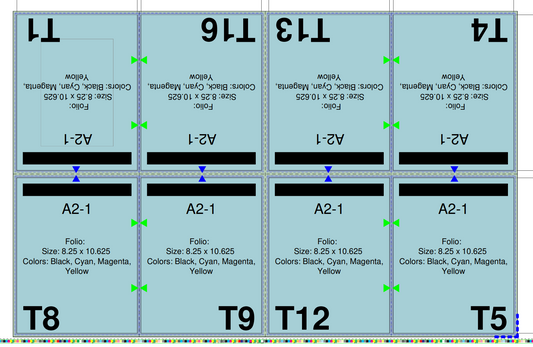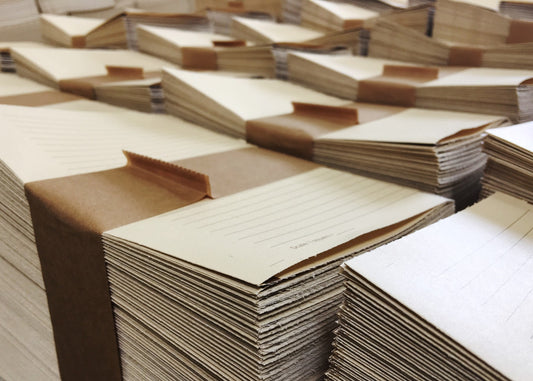Tab cutting is a print finishing process that involves die-cutting a printed stock to a specific size and tab bank format. The tabs themselves are usually made of a durable material like mylar, which is resistant to tearing, creasing, and moisture.
When designing a print project that requires tab cutting, it's important to consider the following:
- Tab Bank Format: The tab bank format refers to the layout of the tabs on the page. There are several tab bank formats to choose from, including straight, angled, and L-shaped. Straight tab banks are the most common, with tabs running vertically down the page. Angled tab banks have tabs that slant at an angle, while L-shaped tab banks have tabs that run horizontally across the page and then turn down. Angle, L and other formats may require custom dies.
- Tab Sizes: The size of the tabs is also an important consideration. Tabs can range in size from 1/4", 3/8" or 1/2" inch, depending on the amount of information that needs to be labeled and the available space on the page. It's important to ensure that the size of the tabs is appropriate for the size of the printed stock and the amount of text that needs to be labeled.
- Tab Positions: The position of the tabs on the page is also crucial. Tabs can be positioned on the left or right side of the page, and can also be centered. It's important to ensure that the tabs are properly aligned with the tab bank format, and that the design elements are centered within each tab.
- Mylar Reinforcement: Mylar reinforcement is an optional feature that can be added to the tabs for added durability. Mylar is a thin, transparent plastic material that is applied to the tabs to reinforce them and prevent tearing or damage. Mylar can be applied to one or both sides of the tabs, depending on the level of reinforcement needed.
Overall, when designing a print project that requires tab cutting, it's important to work closely with a printing service provider to ensure that the layout, size, and position of the tabs are properly aligned and that the printed stock is suitable for the tab cutting process. By taking these factors into consideration, designers can create high-quality printed materials that meet their clients' needs.
Helpful Pointers for Good Tabs
- All print and bleeds should be 1/32" short of tab size. For example, a 1/2" tab should not have print 15/32" from tab edge.
- Square paper is important for consistent tabs.
- Paper should be trimmed to final size, allowing for the die cutter to make a shoulder of each tab.
- Please include at least 5% overs for make-ready. Please include a stock count with your materials so we know how much we have to work with.
| Coated Stock | Yes / No |
| Body Copy | Yes / No |
|
Tab "Bank" Format (EG: 2, 3, 5, 8) |
_______ |
|
Number of Tabs (EG: 5 tabs on bank, 10 tabs on 5 bank) |
_______ |
|
Tab Depth (1/4", 3/8", 1/2" Blade Sizes) |
_______ |
|
Special Layout Style (Standard 1/2" shoulder) |
_______ |
|
Mylar
|
Yes / No |
|
Spine Reinforcing
|
Yes / No |
|
Drilling
|
Yes / No |
|
Collating |
Yes / No |
Tabbing Overlay Guide
Click below for a PDF tab overlay template for various tab bank formats.





